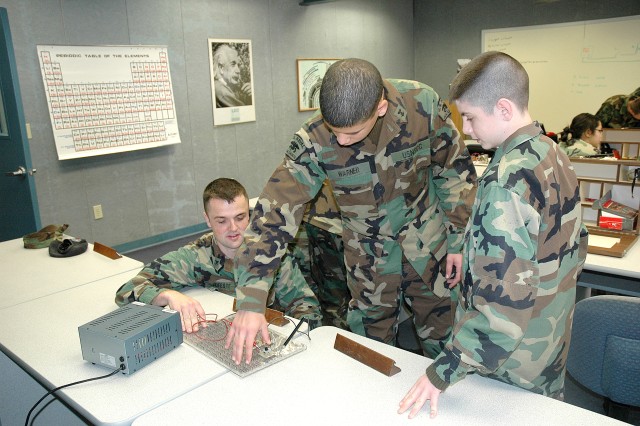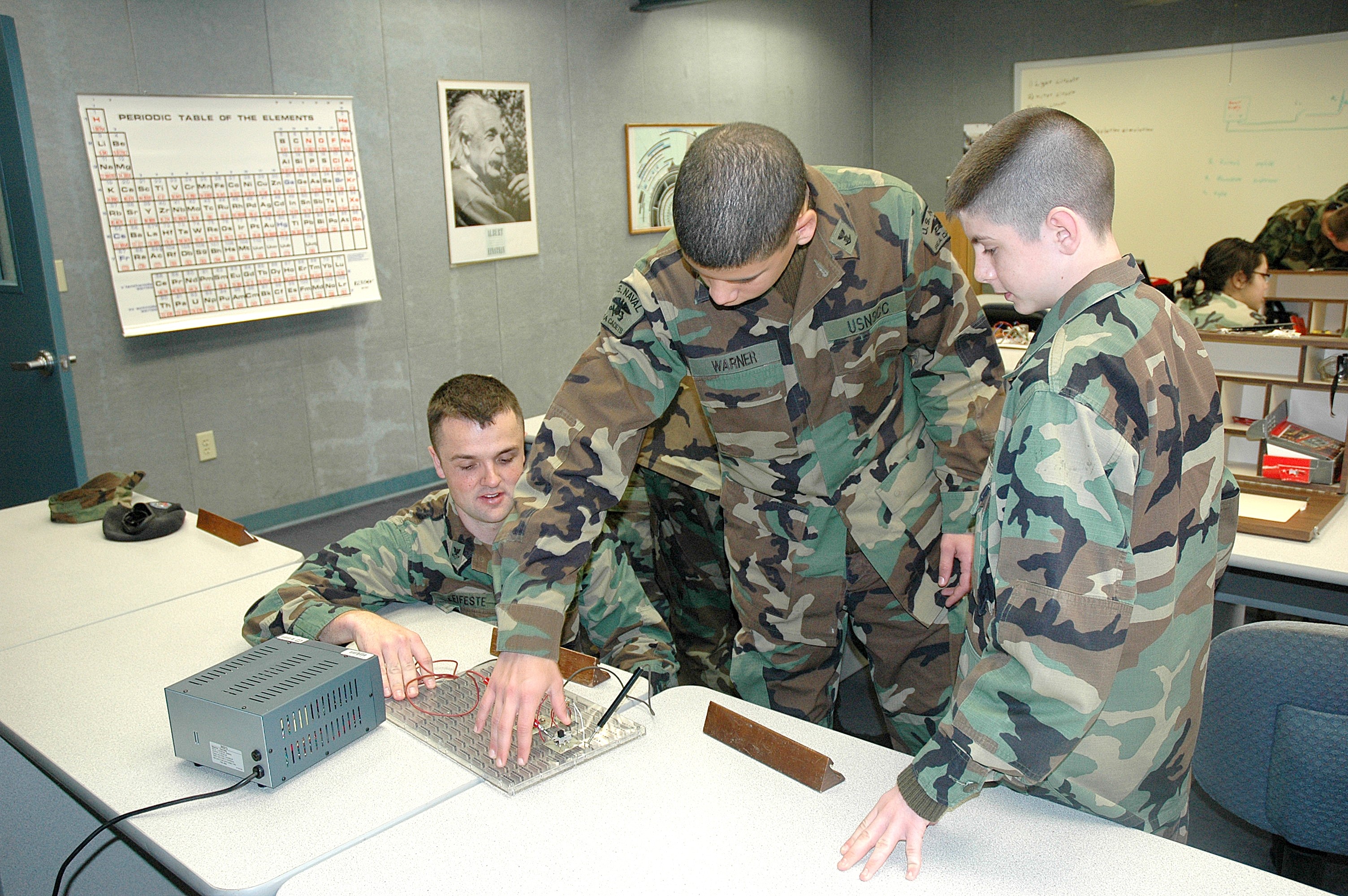FORT BELVOIR, (Virginia) -- Fort Belvoir's Center for Seabees and Facilities Engineering hosted the Alexandria Division of the Naval Sea Cadet Corps Sunday, emphasizing power production training and baA,Asic electricity.
A joint service team of Navy Seabee students, Soldiers and instructors from the Army Prime Power School teach the program.
According to their Web site, the NSCC is for American youth ages 13 to 17 with a desire to learn about the Navy, Marine Corps, Coast Guard and Merchant Marine. Cadets are authorized by the Secretary of the Navy to wear Navy uniforms approA,Apriately marked with the Sea Cadet Corps insignia.
The program is aimed at introducing youth to naval life; to develop in them a sense of pride, patriotism, courage and self-reliance; and to maintain an environment free of drugs and gangs.
To begin the day, the cadets were led through a safety briefing on the hazA,Aards of working with elecA,Atricity.
Throughout the day, inA,Astructors working with the students emphasized the importance of safety.
'Definitely, the key focus today is safety,' Staff Sgt. Taran Dailey said. 'We weren't about to let them work with anything that could hurt them.
'The highest voltage they will be working with is 27 volts, which is virtually impossible to even peneA,Atrate the skin,' Dailey said. After the safety briefing, Sgt. 1st Class Aaron Norris led the cadets through a lecA,Ature on the history of elecA,Atricity and basic electricity. They covered such topics as amps, voltage, resistance and short circuits.
During the lecture, the cadets were also able to make electricity, by using a motor and light bulb.
'I think the kids got an understanding of where power and electricity came from,' Norris said. 'One of them pointed out that Benjamin Franklin inA,Avented electricity, but, in reA,Aality, he discovered it and they now know that it was a progression.
Following the lecture, the cadets split up into groups of two and began the hands- on portion of the program.
'Today, we are going to be showing them some basic electrical circuits and what the different components are and what they are supA,Aposed to do,' Jack Merkle, a civilian instructor with the Prime Power School, said. ' Then, we will go through and help them build one on these circuit boards.' Students were able to conduct various different exercises during the handsA,Aon period, with different types of circuit boards.
The program will conA,Atinue in the near future, when the cadets return to the school to learn about pisA,Atons and how crank shafts work in diesel engines.


Social Sharing